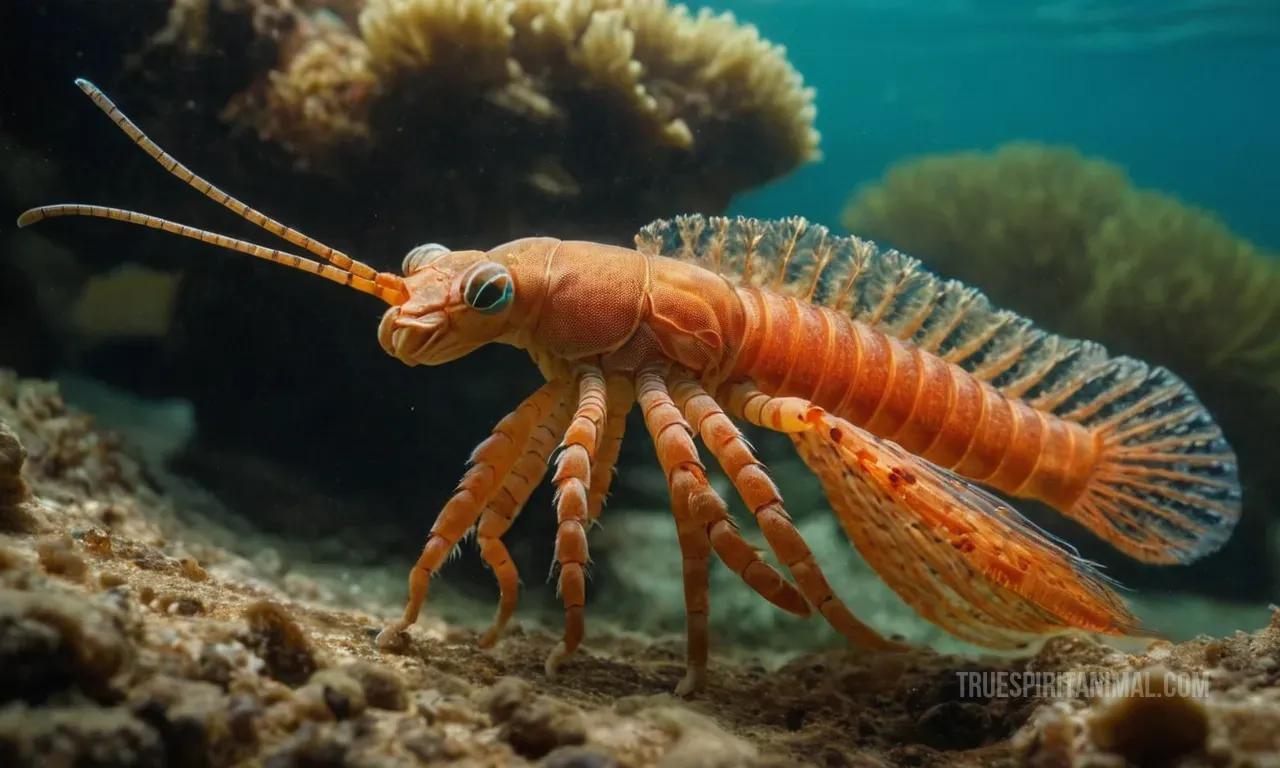Anomalocaris Symbolism and Meaning

Anomalocaris: A Prehistoric Creature with a Rich Legacy
The Anomalocaris is an ancient marine creature that has captured the imagination of scientists, paleontologists, and enthusiasts alike. This prehistoric predator roamed the seas over 500 million years ago during the Cambrian period, leaving behind a legacy that continues to intrigue us today. Its unique appearance and fascinating features have led to various interpretations about its symbolism and meaning in popular culture and scientific circles. In this article, we’ll explore the significance of Anomalocaris and how it has been portrayed throughout history.
Introduction
The Anomalocaris is a prehistoric marine creature that lived during the Cambrian period, approximately 520 million years ago. It was one of the first predators on Earth and had an unusual appearance with its large eyes, long appendages, and a mouth full of sharp teeth. Its name translates to “abnormal shrimp” due to its bizarre features that set it apart from other marine creatures of its time. This extinct arthropod has been the subject of numerous debates among scientists about its classification and evolutionary history. Despite being extinct, Anomalocaris continues to hold a special place in our collective consciousness as a symbol of mystery and wonder. In this article, we’ll delve into what it represents symbolically and how it has been used in various forms of media.
Symbolism of the Anomalocaris
Anomalocaris as a Symbol of Evolutionary Puzzle:
The Anomalocaris is often seen as a symbol of evolutionary enigma because its fossils are among the oldest known to science, dating back to the Cambrian period. Its unique features challenge our understanding of early life forms and their adaptations. It represents the mysteries of evolution, reminding us that life on Earth has always been full of surprises. Its complex anatomy and unusual appearance make it a symbol of how species can evolve in unexpected ways. The creature’s existence challenges our preconceived notions about what early marine life might have looked like, pushing the boundaries of our knowledge about the past.
Anomalocaris as a Symbol of Adaptation:
The Anomalocaris had an unusual mouth filled with sharp teeth and long appendages, suggesting it was a formidable predator in its time. This symbolizes adaptation to different environments and survival strategies. Its ability to thrive despite its unique features highlights the importance of adaptability in evolutionary success. It serves as a reminder that even bizarre-looking creatures can survive if they find ways to exploit their environment effectively.
Anomalocaris as a Symbol of Time:
As one of the oldest known marine predators, it represents time itself. Its presence signifies the beginning of complex life forms and the start of the Cambrian Explosion – a period when many diverse species emerged rapidly. It symbolizes the beginning of biodiversity on Earth, marking the dawn of modern animal life.
Anomalocaris as a Symbol of Mystery:
Its fossils are rare and incomplete, making it an enigmatic figure in paleontology. The lack of complete specimens fuels curiosity about its true nature, adding to its mystique. This mystery adds to its allure, making it a symbol of the unknown and unexplored aspects of Earth’s history.
Anomalocaris as a Symbol of Evolutionary Success:
Despite being extinct, Anomalocaris was successful in its time, indicating that even unusual creatures can thrive if they adapt well to their environment. Its existence shows that evolution doesn’t always follow predictable patterns. It is a symbol of the unpredictability of life forms and survival strategies.
Anomalocaris as a Symbol of Adaptation:
Its long appendages could have been used for catching prey or defense, showing how creatures can adapt to different conditions. This versatility makes it a symbol of adaptation and resourcefulness in the face of adversity.
Anomalocaris in Popular Culture
Anomalocaris in Movies:
The Anomalocaris has appeared in movies like “Jurassic Park” and “Fantastic Beasts: The Crimes of Grindelwald,” symbolizing the fearsome creatures that once roamed our planet. Its portrayal in these films highlights its predatory nature, emphasizing its role as a powerful predator.
Anomalocaris in Literature:
In literature, it often represents mystery and wonder. Writers use it to evoke curiosity about ancient life forms, adding intrigue to their stories. For example, in Michael Crichton’s “Prey,” Anomalocaris is a central character, showcasing its significance in evolutionary history.
Anomalocaris in Art:
Artists often depict it as an alien-like creature, reflecting its otherworldly appearance. This portrayal emphasizes its uniqueness and the unknown aspects of ancient life forms.
Conclusion
The Anomalocaris holds multiple meanings due to its unique features and mysterious nature. It represents evolutionary puzzles, adaptation, time, mystery, evolutionary success, and adaptability. Its symbolism extends beyond science, appearing in popular culture as a fearsome predator or enigmatic figure. This prehistoric creature continues to fascinate us with its complex anatomy and rarity, inspiring art, literature, and films. As we learn more about this ancient marine life form, its symbolism will likely evolve further.





